SEPTEMBER 2022
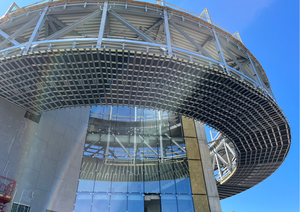 Ostrava University’s new City Campus will welcome its first students in September
Ostrava University’s new City Campus will welcome its first students in September
The University of Ostrava’s new multifunctional campus has been built at Černá Louka (Black Meadow) in the city centre, and it is now ready to welcome its first students this September. The complex will also serve the general public. There is a sports complex that will be home to the Department for Human Movement Studies and also incorporates an indoor sports hall. This state-of-the-art new facility will help attract talented athletes to the region, raising Ostrava’s (already high) sporting profile on the international scene – and this will also help to prevent the “drain” of young people away from the region. The outdoor areas at the sports centre will be used as venues for a variety of cultural events.
The new building of the Art and Design Cluster will be home to the music and design departments of the Faculty of Fine Arts and Music, whose previous premises were not fit for purpose. The Centre for Digital Technologies and Design will have a multimedia suite and more than forty specialist teaching rooms.
The new campus is a tangible response to the challenges that Ostrava faces in the contemporary world. It represents a further step towards the goal of ensuring that many talented young people remain in the region, boosting Ostrava’s reputation as a much sought-after student city. The University of Ostrava has played a huge role in the transformation of this post-industrial region by contributing to the development of numerous exciting new fields – including kinanthropology, biomechanics, and digital animation to name just a few. The campus will serve as a hub training new sports coaches, teachers, producers, graphic artists and musicians. Their contribution to the cultural sphere and public health will help boost the quality of life for Ostrava’s community as a whole.
Source: University of Ostrava
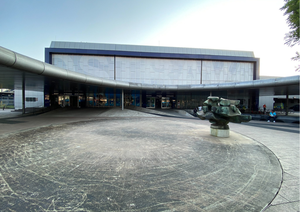 What are the City’s plans for the space outside Ostrava’s main station?
What are the City’s plans for the space outside Ostrava’s main station?
Ostrava’s main railway station is a major rail transport hub, and its importance is set to grow even further with the planned construction of a high-speed rail line and the complete modernization of the station (a project that will be implemented by the national railway authority, which operates the station). To complement this project, the City of Ostrava is planning extensive improvements to the public space directly in front of the station.
During the past 15 years, several studies have been produced proposing future changes to this public space. One of them proposed creating a transport museum, which was to be located in a building facing onto the area outside the station. However, this building eventually proved inadequate for the museum’s purposes. The architectural studio Casua is currently drawing up a new study for the City.
A draft version of this study was recently presented to and debated by City representatives and other experts at Ostrava’s Municipal Studio for Urban Planning and Architecture (MAPPA). At the core of the concept is the increasingly important role that the station will play as a multimodal interchange combining rail transport, buses (both local and regional), trolleybuses and tram services. After the modernization of the railway station and its connection to the high-speed line, rail passenger numbers are expected to rise from 8 800 to 14 000 per day.
The area in front of the station is currently dominated by the tram terminus loop. This will be relocated and modified to allow full barrier-free passenger access. At a later date, following the completion of the planned extension of Skladištní Street, the tram loop will be relocated again to a site near the Černý Potok stream. The entire area will become a modern city quarter, organically connected to the historic centre of the Přívoz district (designed by the Viennese architect Camillo Sitte at the turn of the 20th century). The current station building – built in the 1960s, and a fine example of the so-called Brussels style – will be preserved, including the canopy over the entrance area. Pedestrian routes will be on two levels – at ground level (for routes between individual buildings and access to/from the surrounding area) and at the upper-floor level (for access to the platforms and the underground parking garage).
Photo: MAPPA
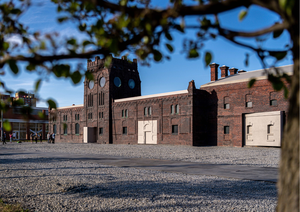 Revitalized historic slaughterhouse will be open for public viewing permanently
Revitalized historic slaughterhouse will be open for public viewing permanently
The ceremonial opening of the new PLATO gallery and the opening of the first exhibition will take place on Wednesday, September 21, 2022 at 6 p.m.
The exhibition entitled Optimized fables about the good life is based on the fable genre and discusses how to live a good life. Thus, quite symbolically, it opens a new stage of the gallery's functioning. Quality of life is not only part of the exhibition, but of the overall approach to the transformation of the slaughterhouse into a gallery of contemporary art.
In the past months, this historic late-19th-century building has undergone a complete reconstruction and renovation that has given it a fresh new appearance – integrating many of the original features of the slaughterhouse into a new, unique design concept that will enable it to operate as a modern gallery. The new Plato gallery has five exhibition halls which can either function separately or be combined into a single space by rotating the partition walls in line with the principles of “moving architecture” – of which architect Robert Konieczny is an enthusiastic proponent.
Photo: Lukáš Kaboň
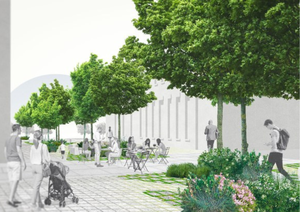 Masná Street is set to undergo a complete redevelopment
Masná Street is set to undergo a complete redevelopment
A complete transformation awaits Masná Street in Ostrava’s city centre, close to the historic former slaughterhouse that has now been converted into the Plato contemporary art gallery. Currently the street is a dead end, but it will be extended to create a link to Stodolní and Janáčkova Streets. The contractor began work at the site on 8 August 2022, and the project is scheduled for completion by the end of the year. The public space between the gallery and the planned Rezidence Stodolní development is already beginning to take shape.
The extension of Masná Street is another step towards the eventual creation of a new city quarter centred around the Plato gallery – an ambitious project that is already starting to become a reality. The gallery and the new apartment block on Janáčkova Street are now complete, and work will soon begin on the Rezidence Stodolní project. The City is actively seeking out investors to develop other building plots, in order to ensure that these too become sites of high-quality urban architecture.
The new extended Masná Street will have traffic in both directions, plus a cycle corridor running alongside it in the direction from Českobratrská Street. There will be parking spaces on one side of the street, and the other side will have a pavement for pedestrians, flanked by beds of perennial plants. Trees will be planted next to the parking spaces, and there will also be underground bins for sorted waste.
The street will give direct access to the public space between the gallery and the planned Rezidence Stodolní development, which is being built by Linkcity Czech Republic and will offer attractive modern city-centre apartment living (scheduled for completion in 2026). The large grass area outside the gallery will be divided into smaller “islands” of greenery near the new residential development. Trees will be planted at irregular points, and pedestrian walkways will be designed to allow grass to grow between the paving stones; all these features will create a delightful impression of an “urban woodland”, encouraging people to use it as a place of rest and relaxation.
Visualisation: Linkcity Czech Republic
 Preparations for the cathedral parking garage have entered their next phase
Preparations for the cathedral parking garage have entered their next phase
The preparations for the new parking garage to be built next to Ostrava’s cathedral have now entered their next phase. Currently it is necessary to carry out surveys that will form the basis for the structural design of the garage. The parking lot to the south of the cathedral (on Náměstí Msgre Šrámka) will be closed to the public from 22 August to 5 September 2022 to enable the work to take place.
The parking lot will be closed once more later this year for an archeological survey. Construction work on the new parking garage – to be situated on the corner of Zámecká and Purkyňova Streets – is scheduled for 2026. A design study is currently being drawn up, and this will be followed by the documentation for the construction permit and implementation.
The garage will form part of a multifunctional building, with two underground and seven above-ground levels offering 400 parking spaces. The ground floor will contain premises for shops, services and restaurants/cafés. The garage will greatly improve parking provision in the heart of the city centre. In the future, it will be possible to convert the structure into a residential building if necessary.
Visualisation: Chalupa Architekti
 Ostrava’s concert hall project enters its next phase
Ostrava’s concert hall project enters its next phase
The City of Ostrava has announced a public tender for the contractor to carry out building work in the first phase of the concert hall project. This phase will involve preparatory work (re-routing of utilities networks, demolition of the current outdoor “amphitheatre”, excavation of the foundation pit, and similar tasks). Before announcing the tender, the City carried out a preliminary market consultation and presented its investment plans to potential contractors.
Ostrava has needed a high-quality music venue for many years; in fact, the first proposals to build a concert date back to the mid-19th century. Decades of dreams are now set to become a reality thanks to the new hall, whose design (by the American architect Steven Holl) was chosen in an architectural competition. The design will offer a unique and distinctive architectural solution that involves integrating the existing cultural centre (a legally protected heritage site) into the bold yet also timeless new structure. The American magazine Architizer ranked the concert hall among the ten most eagerly awaited new buildings in the world.
Visualisation: Steven Holl Architects
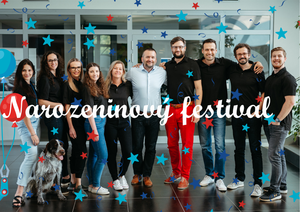 Moravian-Silesian Innovation Centre celebrates its fifth birthday
Moravian-Silesian Innovation Centre celebrates its fifth birthday
The Moravian-Silesian Innovation Centre (MSIC) began operating in 2017. Its predecessor was the Ostrava Science and Technology Park, and it was created on the basis of a memorandum of cooperation signed by the City of Ostrava and the Moravian-Silesian Region committing to support enterprise and innovation in the region.
The MSIC’s mission is to provide services supporting growth and innovation in companies. These services are either not offered at all by other providers on the regional market, or they are not offered to the required quality, at a reasonable price, or under other acceptable conditions.
The MSIS has decided to celebrate its fifth birthday by presenting its achievements so far. The celebrations will take place on 15 September. Five stages will be set up at the T-Park (the home of the MSIC), and the organizers are planning a fascinating programme of events focusing on talents, inspirational stories of business success, and cooperation with scientific research teams.
Photo: MSIC
OTHERS
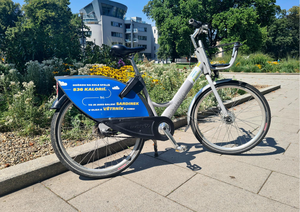 Nextbike will continue to operate Ostrava’s bikesharing scheme for the next two years
Nextbike will continue to operate Ostrava’s bikesharing scheme for the next two years
The City of Ostrava has selected the operator of its bikesharing scheme for the upcoming two years. The contract has again been awarded to Nextbike Czech Republic, which has been running the system for several years.
The bikesharing scheme is now in its fourth year of operation, and during that time it has become a hugely popular option for personal transport around the city. Ostrava has over 1 000 shared bikes operating year-round and based at 356 separate bikesharing points. Thanks to a City subsidy, each loan of a bike is free of charge for the first 15 minutes. The number of registered users is now almost 72 000. Last year, users made a total 515 000 journeys as part of the scheme, covering more than 717 000 kilometres.
The popularity of bikesharing in Ostrava continues to grow, and the City has supported the scheme by enlarging the bike fleet and adding new bikesharing points, as well as by building brand-new cycling infrastructure. Thanks to additional funding provided by the City, holders of an ODIS card (a season ticket for Ostrava’s integrated public transport system) can now enjoy an extra 15 minutes of free riding in addition to the 15 minutes that are free for all users.
 Conference ‘Talent City 2022’ – supporting talent in Ostrava
Conference ‘Talent City 2022’ – supporting talent in Ostrava
On 14 and 15 September 2022, Ostrava’s city centre will host the conference ‘Talent City 2022’, which focuses on supporting and developing talent across a range of areas. The conference will bring together local organizations and international guests. Participants will discuss how best to support and develop talent – as well as learning more about Ostrava’s talent management activities. The conference is being held as part of Ostrava’s involvement in the international initiative ‘Global Startup Cities’ and the Czech Republic’s EU Council Presidency. For many years, the City of Ostrava has run programmes targeted at supporting talented school and university students, and it works closely alongside a range of other organizations to implement a systematic talent management programme.
The ‘Talent City 2022’ conference will include an accompanying programme of events held in Ostrava’s main square (Masarykovo náměstí) on 15 September. The programme will last all day, and it will be targeted at children, young people and the general public. There will be a presentation by the Ostrava Gallery of Fine Arts, which will hold a special workshop. The University of Ostrava will also be involved in the programme, with activities focusing on sports, art and technology, offering members of the public the opportunity to participate in fun activities. Ostrava’s Technical University (VŠB) will display models and interactive exhibits to present some key issues in our modern world.
The conference is targeted at experts working at all levels of the education system, representatives of education providers, regional authorities, and other stakeholders. On 14 September from 6 p.m., the PANT Centre will host the opening session of the conference, centred around an expert debate on how to support talent.
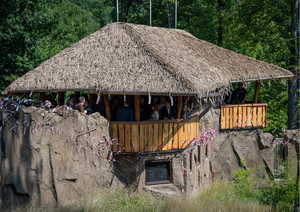 The latest project at Ostrava Zoo is now complete, with new enclosures for macaques and gibbons
The latest project at Ostrava Zoo is now complete, with new enclosures for macaques and gibbons
Ostrava’s Zoo and Botanical Park has recently opened two new facilities for rare primates and other animals. The macaques and gibbons have now been relocated from the old pavilion to their state-of-the-art new homes.
The project comprises two new buildings. Firstly, there is a house for lion-tailed macaques, which also has an outdoor enclosure. Work on this part of the complex included the construction of essential utilities networks, visitor walkways, fixtures and fittings. Secondly, there is a two-storey house for gibbons and ungulates which also includes an outdoor enclosure, plus all essential utilities networks (gas, water). Construction work at both sites took place simultaneously, lasting from March 2020 to March 2022.
The Zoo and Botanical Park is one of Ostrava’s most popular destinations, attracting visitors from all over the Czech Republic and beyond. Its owner – the City of Ostrava – continues to expand and modernize the complex in order to ensure that it functions to a high standard both as a renowned provider of care to many endangered species and also as a much-loved tourist attraction. Among the projects that are being implemented to further enhance visitor comfort is a brand-new parking garage; work began during this summer and will continue throughout next year. When complete, the garage will substantially improve parking provision, which is currently inadequate to meet demand (especially during the summer season).


